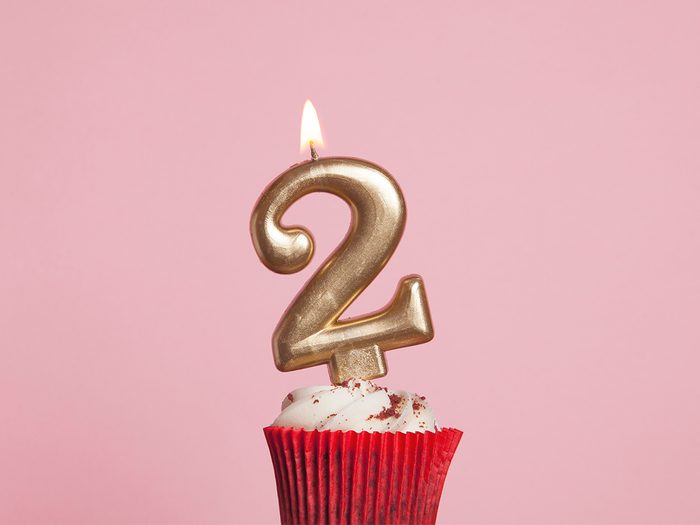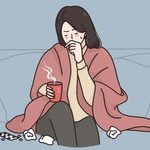This Pandemic Anniversary Is Nothing Like Last Year

Two years into the pandemic, we are untrusting of the ups and guarding ourselves against the downs—but there is reason to hope, even if it feels hard right now.
It’s hard to believe that it was two years ago that the World Health Organization declared COVID-19 a global pandemic. Within these two years, Canadians have been on a rollercoaster of rising and falling case counts. Many of us have been double, triple or in some cases, even quadruple vaccinated, and as we enter the spring, restrictions and mandates are lifting, signaling a potential return to normalcy.
Early on, experts pointed to the concept of the hammer and the dance. Basically, the thinking was a short period of intense restrictions (i.e. the hammer) could suppress the virus, allow us to open up more and buy us the time needed to develop a vaccine (i.e. the dance). Last year at this time, it felt like we succeeded. We locked down. An incredibly effective set of vaccines were developed. By summer, we got the chance to dance.
But this pandemic anniversary feels different than last year. At the one-year mark, I remember looking forward with a sense of hope as more and more Canadians were gaining access to the coveted vaccine. Of course, that isn’t exactly how things played out.
Instead, two intense variant-driven COVID waves and a waning of vaccine-mediated immunity set us back significantly, necessitating more lock downs.
On this second pandemic anniversary, the mood is palpably different. Unlike 2021, we have been here before. We know that returning to restaurants, social gatherings and a general sense of normalcy may be temporary. We’ve seen the ups and endured the downs, and that can make it hard to trust that as we enter the third year of the pandemic, things really might permanently get better—but there is reason to hope, even if that feels hard right now.
Why I still worry
Looking back, the statistical footprint of two years of COVID in Canada is staggering—3.34 million cases, more than 37,000 deaths and over 81.5 million doses of vaccines administered. Looking forward, new variants of concern, waning vaccine effectiveness and the prospect of living with some form of COVID for the foreseeable future makes it hard to let our collective guard down.
As an internal medicine physician in Toronto, I’ve spent a good part of the last two years on the frontline. COVID has impacted every clinical and administrative aspect of my job from wearing PPE for all patient encounters to moving care to virtual platforms to training the next generation of health professionals for future pandemics. I continue to be amazed by the sheer grit, work ethic and determination of my colleagues provide the best care possible—even when we went from being hailed as heroes to combating misinformation and fearing harassment from anti-vaccine protesters. But my worry now shifts to what’s to come because the full effects of COVID on our health care system and health care workers won’t be known until this crisis is behind us.
(Related: I Need You to Know: Vacation Doesn’t Solve Burnout)
My colleagues are experiencing unprecedented burnout. It’s been a relentless two years, and I’m not surprised that nurses and physicians are ramping down their work and responsibilities and even leaving the profession in droves. This exodus could not be more ill-timed. There is a massive backlog of medical assessments, procedures and surgeries that have been deferred for two years. There is the urgent need to fix the broken systems the pandemic laid bare—like our long-term care homes, lack of mental health infrastructure and extensive care access issues for the people most at risk. And COVID has created new demands on the health care system, like patients with long COVID, that we’ve yet to fully figure out how to triage.
With the relaxing of mask mandates on the horizon and reopening plans firmly in place across multiple provinces for the spring, you would think this would be a time to be hopeful and optimistic for the future. But it doesn’t really feel this way, partly because there are so many unknowns. Will opening up drive case counts up? Will we need to reintroduce restrictions? Will there be some new summer variant that sets us back again? Will we need more vaccine doses? It’s hard to envision what the future looks when it’s not clear if and how the pandemic will end.
Where to find hope
To others that are feeling fatigued and numb at the prospect of another ‘abnormal’ year, I do strongly believe this year will be better than the last.
From a scientific perspective, we have a much larger and evolving body of COVID knowledge to guide us. There are multiple large Canadian-led studies, including the Canadian COVID-19 Prospective Cohort Study (CANCOV), that are helping us better understand the long-term effects of COVID and how to help patients experience lingering symptoms. We also have new treatments, like antiviral medication, that can hopefully mitigate some of the risks of COVID.
(Related: What You Need to Know About Long COVID, According to a Long COVID Researcher)
There is also much more public recognition of the evolving workforce crisis and burnout among nursing and personal support workers, forcing a political will to make meaningful system changes. For example, the Ontario government plans to invest $342 million over the next five years to add 13,000 nurses and personal support workers (PSW) to the province. While this is not a solution, it’s at least a start. I’m optimistic we can use the learnings from COVID to galvanize a coordinated effort to improve other large systemic issues like elder care, mental health access and systemic inequity.
Where I’m personally finding hope right now is in the small steps I will get to take toward normalcy as things open up, especially those activities I’ve either forgotten or taken for granted. I look forward to attending weddings. Planning a baby shower for the arrival of my second child. Seeing a movie. Going to a gym. Planning a vacation. I’m grateful that, unlike last year, we have all the tools available to us—like rapid testing kits, N-95 masks and booster vaccine doses—to make gatherings and activities as safe as possible. Rather than worry about the things I can’t do, I’m trying to find joy in the things we are able to do safely. Embracing our new, and ever-evolving reality.
So, on this second pandemic anniversary, maybe we should stop aspiring to go back to the way things were before. This pandemic might not have a distinct end. Instead, think of the pandemic as a major life event, like a birth or a death of a loved one. After those milestones, there is no going back to the way things were. The best we can do is to find joy and meaning in our new reality.
Next: Everything You Need to Know About COVID Antiviral Pills




